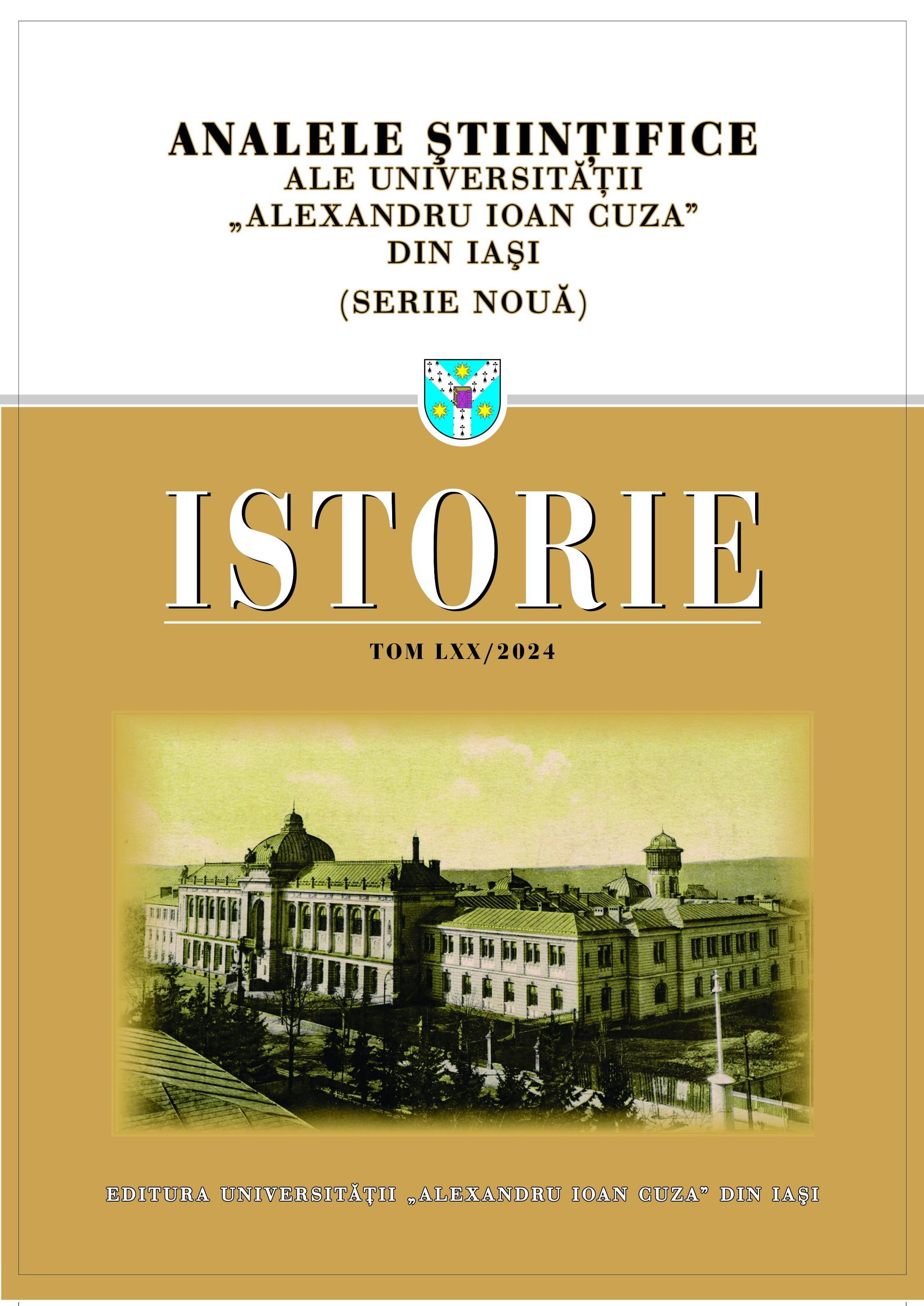Despre schitul Corni (ţinutul Putna), ctitoria marelui vornic Alexandru Ramandi, metoc al mănăstirii Dohiar
de la Muntele Athos
About the Corni skete (Putna County), the foundation of the grand vornic Alexandru Ramandi methochion of the Docheiariou monastery on Mount Athos
Author(s): Petronel ZahariucSubject(s): History, Cultural history, Local History / Microhistory, 17th Century, 18th Century
Published by: Editura Universităţii »Alexandru Ioan Cuza« din Iaşi
Keywords: Corni skete; Docheiariou monastery; Alexandru Ramandi; Moldavia; Putna county;
Summary/Abstract: The present study deals with a little-known skete in the area of the former Putna county, the Corni skete, the only one in Moldavia that was placed under the administration of the Docheiariou monastery on Mount Athos. The skete, dedicated to the Entry of the Mother of God into the Church (Vovidenia), was located in the village of Cornii de Jos, on the Siret river, in Putna County (today a village in the commune of Tătăreşti, Bacău County). The founder of the Corni skete was Alexandru Ramandi and his wife Maria. We deal in this study also with the origin of the founder, son of the Greek Constantin Ramandi and Sultana, who climbed the hierarchical ladder in Moldavia from the second postelnic (at the beginning of the reign of Istratie Dabija) to the grand vornic of the Upper and Lower Country (under Dumitraşco Cantacuzino and Constantin Cantemir). He reached the peak of his career when he held the position of caimacam (prince's lieutenant) when John Sobieski came to Moldavia and when Constantin Cantemir died. Having accumulated wealth and influence, Alexandru and Maria Ramandi founded the Corni skete in Putna county, together with a church in the village of Vânători, near the Piatra market town. The rebuilding of the Corni skete began after 1684, during the reigns of Dumitraşco Cantacuzino and Constantin Cantemir, and it was placed under the obedience of the Docheiariou monastery on Mount Athos in 1689, when the Mira monastery was attached to the Vatopedi monastery on the Holy Mountain. Since the death of its founders, the Corni skete has fluctuated, with less and less information about it. In 1805, the monks of Docheiariou reclaimed the right of possession of the skete, sending to Iaşi the hieromonk and hegumen Anthim, who complained to the Metropolitan bishop Veniamim Costachi, saying that the proofs of ownership had been lost during a "rebellion" that had taken place in the Holy Mountain, and that the state of their "imperial and patriarchal" monastery was difficult. The Metropolitan bishop of Moldavia and Suceava, Veniamin Costachi, and the Bishop of Roman, Gherasim Clip-Barbovschi, accepted that the Corni skete should return to the Docheiariou monastery authority. The Romanian monks who lived in the skete left and, with the support of the people from the surrounding villages and the Roman Diocese, built a new skete in the neighboring village of Cornii de Sus, dedicated to the Dormition of the Virgin Mary. Thus, in the census drawn up during the new Russian occupation (1806-1812), two sketes were recorded in the villages of Cornii de Jos and Cornii de Sus: the one in Cornii de Jos, with only one inhabitant, the hegumen Anthim, and in Cornii de Sus, or nearby, the "Ţâcma skete". After 1863 the skete was abandoned and disappeared.
Journal: Analele Ştiinţifice ale Universităţii »Alexandru Ioan Cuza« din Iaşi. Istorie
- Issue Year: 2024
- Issue No: 70
- Page Range: 189-215
- Page Count: 27
- Language: Romanian
- Content File-PDF

